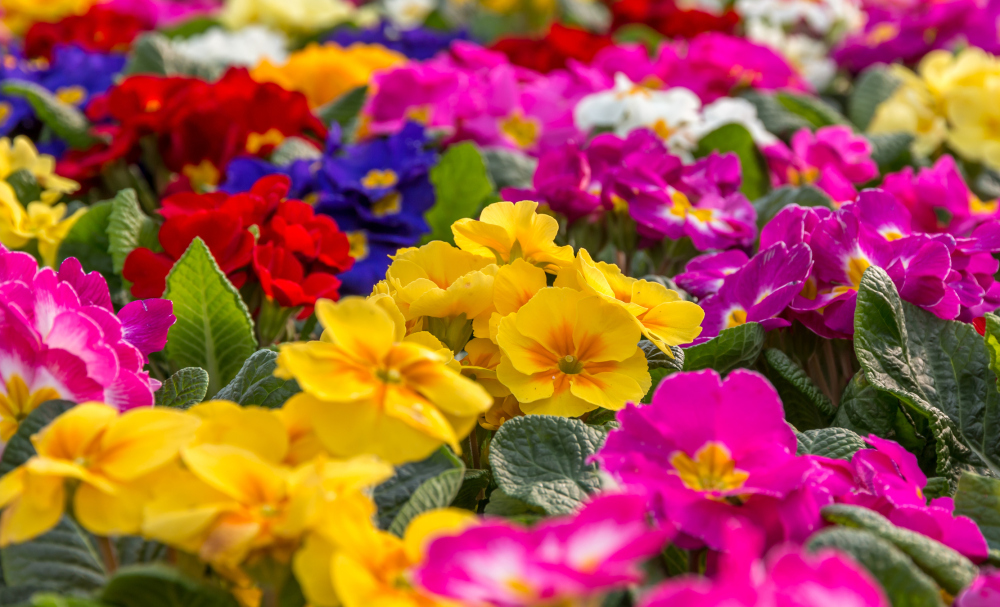
Primula, commonly known as primrose, is a beloved flowering houseplant that brings vibrant color to any space. With their soft, colorful blooms in shades of pink, purple, yellow, and white, primulas are a great choice for brightening up your home during the colder months. These plants are relatively easy to care for but have specific needs to ensure they thrive. Here’s a guide on how to care for your Primula houseplant.
Primulas thrive in bright, indirect light. They do best when placed near a window with filtered sunlight, such as a north or east-facing window. While they need plenty of light to encourage blooming, direct sunlight can scorch their delicate leaves and cause the flowers to fade. If natural light is limited, you can also grow Primula under artificial grow lights, especially during the winter months when daylight hours are shorter.
Primulas prefer moist, well-draining soil, but they do not like to sit in water. To water your primula, allow the top inch of soil to dry out before watering again. Be sure to water your plant thoroughly, but make sure the pot has drainage holes to prevent water from accumulating at the bottom, which could lead to root rot. Avoid getting water on the leaves, as this can cause fungal issues. During the growing season (spring and summer), water more frequently, but reduce watering in the winter when the plant is resting. Always check the soil moisture before watering to avoid overwatering.
Primulas enjoy moderate to high humidity. These plants are native to temperate climates, so they prefer a bit of moisture in the air. If your home is dry, especially in winter, you can increase humidity around your primula by placing it on a humidity tray filled with water and pebbles or using a humidifier. Alternatively, grouping plants together can help create a more humid microenvironment. Just be sure to avoid placing your primula in a drafty area, as cold air can stress the plant.
Primulas prefer cool to moderate temperatures, ideally between 50-65°F (10-18°C). They are not tolerant of extreme heat and can suffer if exposed to temperatures above 70°F (21°C). Keep your primula in a room with a stable temperature and away from direct heat sources, such as radiators, heaters, or vents. If the temperature is too warm, the plant may stop blooming or the flowers may wilt prematurely.
Primulas need well-draining, slightly acidic to neutral soil. A standard potting mix works well, but you can improve drainage by adding some perlite or sand to the mix. Ensure the pot has drainage holes to prevent water from accumulating at the bottom. Primulas are sensitive to root rot, so it’s essential to avoid compacted, soggy soil. A slightly acidic pH (around 6.0-6.5) is ideal for primulas, which you can achieve by using a mix designed for acid-loving plants.
During the growing season, feed your primula every 4-6 weeks with a balanced, water-soluble fertilizer diluted to half strength. This will provide the necessary nutrients to support blooming. Avoid over-fertilizing, as this can lead to excessive leaf growth at the expense of flowers. In the winter months, when the plant is not actively growing, you can stop fertilizing altogether.
Primulas don’t require heavy pruning, but you can deadhead spent flowers to encourage new blooms and keep the plant looking tidy. Use clean, sharp scissors or pruning shears to remove any wilted or faded flowers. If your primula becomes leggy or overgrown, you can trim back the stems to encourage a fuller, more compact shape. Be gentle when handling the plant, as its stems and leaves can be delicate.
Primulas don’t need frequent repotting. However, if your plant becomes root-bound or the soil has become compacted, it’s a good idea to repot it into a slightly larger container. Choose a pot that’s just a few inches larger in diameter than the current one to avoid overpotting. Repotting is best done in the spring, just before the growing season begins. Gently remove the plant from its current pot, trim any damaged or dead roots, and place it in fresh, well-draining soil.
Primulas are non-toxic to pets, making them a safe option for homes with cats, dogs, or other animals. However, while they are not poisonous, it’s always a good idea to keep your plants out of reach of pets that may be tempted to chew on the leaves or flowers. If your pet does ingest any part of the plant, it’s unlikely to cause serious harm, but it’s always best to monitor for any signs of gastrointestinal upset and contact your vet if needed.